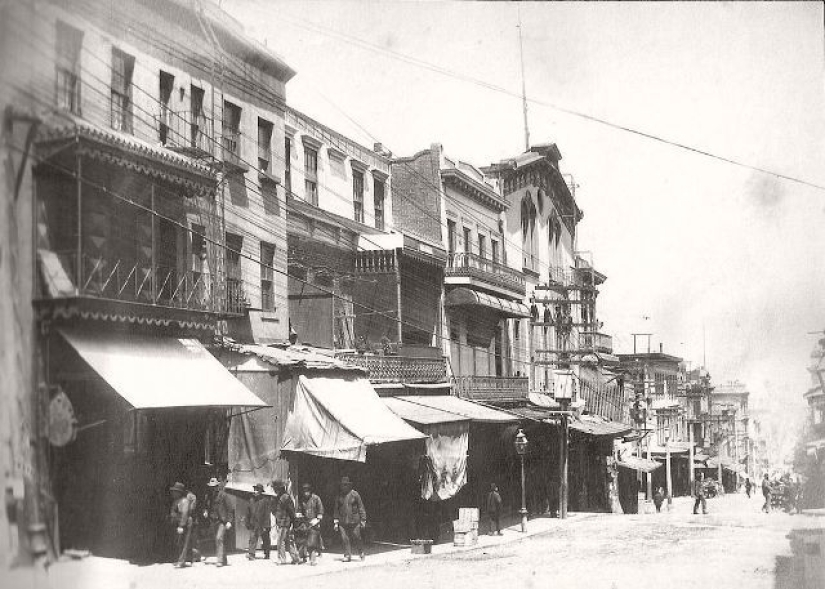The history of quarantine — the oldest and most effective remedy for epidemics
Categories: Health and Medicine
By Pictolic https://pictolic.com/article/the-history-of-quarantine-the-oldest-and-most-effective-remedy-for-epidemics.htmlTo stop the spread of coronavirus, cities in the Chinese province of Hubei are being quarantined. In some countries, citizens who have returned from Wuhan and other centers of the epidemic are isolated from society for two weeks to make sure they are healthy.

Quarantine is a method known for centuries to combat the spread of diseases. It received its name in honor of the first case of practical application in history, which occurred in Venice in the XIV century. Then Europe was literally dying out from a devastating plague epidemic, and the beautiful city on the water had not yet faced this scourge.
The disease could come by sea and the authorities of the port cities were well aware of this
Since ships from many countries were constantly entering the port of Venice, it was only a matter of time before the epidemic began in the city. To prevent this, the city council introduced a rule according to which every ship arriving at the port must stay at anchor at sea for 40 days before its crew is allowed to set foot on shore. Later , special barracks were built for quarantine on the islands of Lazoretto and Poveglia.
This rule, mandatory for all sea guests, was called "quarantino", from the Italian word "forty". Today, scientists cannot explain why exactly 40 days were determined. Mark Harrison, professor of the history of medicine at Oxford University, suggests that the figure is related to the 40 days that Jesus, according to the New Testament, spent alone in the desert.

Quarantine buildings on the island of Lazoretto in the Venetian Lagoon
Later, the quarantine period was shortened, but its principle remained unchanged and is still used today. Quarantine was practiced everywhere in medieval Europe. The most famous case when isolation helped to defeat the disease is considered to be the history of the English village of Im, in which most of the population died from bubonic plague in 1665-1666.After a few months of the plague epidemic, in June 1666, a new parish priest named William Mompesson decided to use the practice of the Venetians and close the village to quarantine. He gathered the surviving residents and informed them that from now on it was impossible to leave the village or receive guests in it.

Plague burials have been preserved in the village to this day
The clergyman was supported by the Duke of Devonshire, who promised to support the quarantine village with food until the plague recedes. For his part, the priest Mompesson vowed to do everything in his power to comfort the villagers and help them cope with mental anguish and grief.
They marked the boundaries of the village with stones, beyond which its inhabitants could not go out, even if they felt perfectly healthy. There were hollowed—out depressions filled with vinegar in the stones - they contained coins that merchants could take away, leaving their goods near the quarantine border.
The plague did not spare the villagers — in August 1666, the death rate peaked and amounted to 5-6 people per day. Despite this, quarantine continued to be observed and soon the incidence began to decline. In November, the last patient died and the epidemic completely stopped. The result was terrible — out of 344 inhabitants, the village lost 267 to them. Despite this, the disease was stopped and did not spread to other villages.

"Plague cottage" in the English village of Im, whose inhabitants died during the epidemic
In the modern world, quarantine is imposed by the authorities or medical organizations. Historian Mark Harrison argues that quarantine has more than just a medical justification:
In 1900 , it was necessary to introduce quarantine for Chinese immigrants in San Francisco, USA. Measures were taken after the corpse of a man from China with all the signs of the plague was found in one of the hotel rooms. Chinatown was immediately cordoned off by the police, and then fenced with barbed wire.
San Francisco in 1900
Residents of the quarantine zone were strictly forbidden to leave it, and only police and medics could get inside. As always, the isolation bore fruit — the epidemic did not happen, and residents of one of the largest cities in the United States were saved from panic.
A new era of control over the spread of deadly diseases began in 2002-2003 with the outbreak of the SARS coronavirus, known to many as SARS. People suspected of being in contact with infected people were isolated to make sure they were safe. The Chinese authorities have even introduced criminal liability for non-compliance with quarantine or obstruction of its implementation.

Processing of passengers from China before being quarantined
Despite the measures taken, the virus from China got into the Canadian city of Toronto, where he killed 44 people. In Canada, the authorities had to quarantine 7,000 people to stop the spread of SARS. Harrison is sure that if not for these decisive measures, which were supported in many countries, a pandemic could have started, which would have claimed a huge number of lives.
Today, China is carrying out quarantine measures to contain the spread of the virus. The World Health Organization has recognized that the country's authorities and its medical workers are doing everything to solve an extraordinary problem that threatens the whole world.
Keywords: Disease | Venice | Quarantine | Ship | Coronavirus | Pestilence | Death | Middle ages | Plague | Epidemic
Post News ArticleRecent articles

Markus Reugels is an incredibly talented German photographer who specializes in high-speed and macro photography. His photographs ...

Learn unusual and interesting facts about our planet and the creatures that inhabit it! -- >Ants, when dying, emit special ...
Related articles

One of the tallest people in the world is now fighting for life in a London orphanage. The height of Hussein Bisad is 2.32 m. A ...

An international group of researchers has found that the propensity of some people to build a business may be due to the presence ...

The ages are suffering from various diseases. With the progress of society evolving and medicine, but health problems continue to ...

The Japanese craftswoman has honed her skills in working with wool so much that now her crafts - felted animal figurines - look as ...